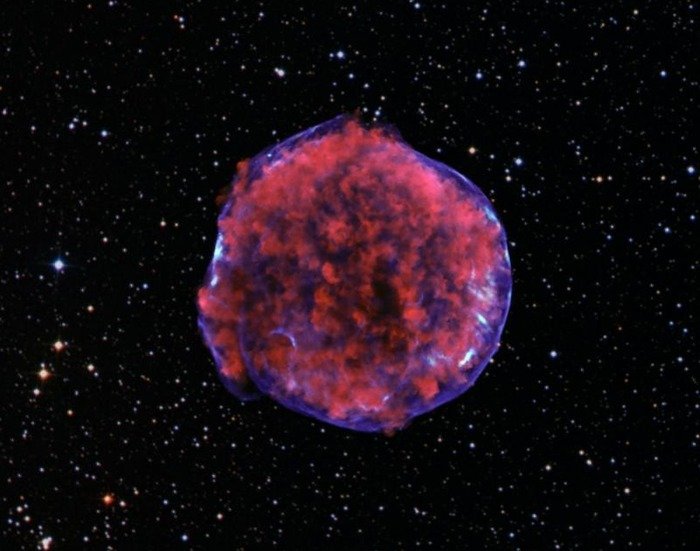A photograph of the Tycho supernova remnant taken by the Chandra X-ray Observatory. Credit: NASA
CAMBRIDGE, Mass., Nov. 26 (UPI) -- U.S. astronomers say they're able to study a supernova remnant because it's being lit up by a shock wave traveling 1,000 times the speed of sound.
Tycho's supernova, witnessed by astronomer Tycho Brahe in 1572, shone brightly for about a year before fading away, but it still glows with X-ray light centuries later, researchers said.
A phenomenon known as a reverse shock wave has allowed researchers at the Harvard-Smithsonian Center for Astrophysics to study the remnant today.
"We wouldn't be able to study ancient supernova remnants without a reverse shock to light them up," astrophysicist Hiroya Yamaguchi said.
Tycho was a Type Ia supernova, caused by the explosion of a white dwarf star that spewed elements into space at more than 11 million mph.
When that material rammed into surrounding interstellar gas, it created a shock wave -- the equivalent of a cosmic "sonic boom" --still moving outward at about Mach 300.
However, that interaction also created a violent "backwash" -- a reverse shock wave that speeds inward at Mach 1,000, heating the remnant and causing it to emit X-ray light.
"It's like the wave of brake lights that marches up a line of traffic after a fender-bender on a busy highway," study co-author Randall Smith explains of the shock wave that's allowing a study of the remnant hundreds of years after the supernova occurred.
"Thanks to the reverse shock, Tycho's supernova keeps on giving," he said.















